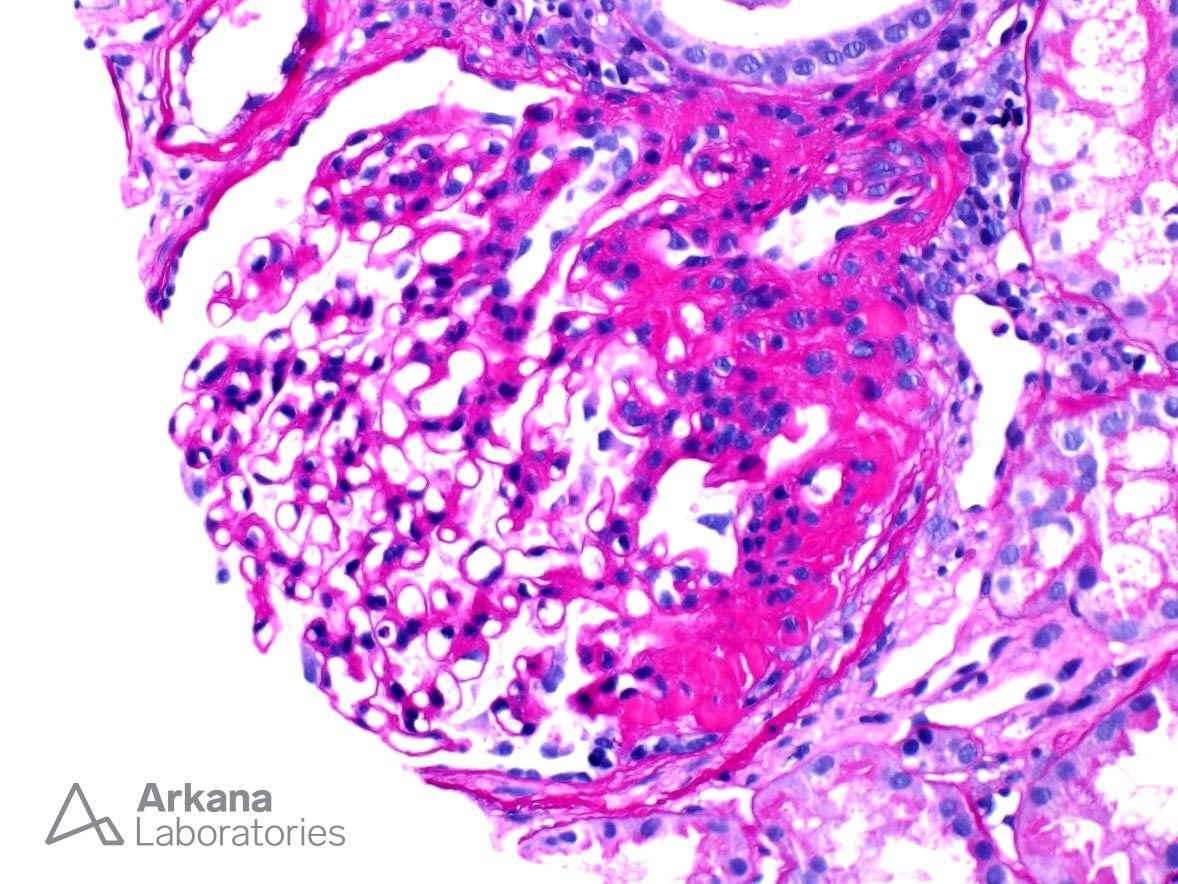This biopsy is from a 61 year-old, morbidly obese patient, who presents with 6 month history of persistent proteinuria (UPCR: 3.7 gm/gm). The displayed glomerulus is enlarged and shows an area of segmental sclerosis involving the perihilar region of the glomerulus. Additionally, electron microscopy showed only mild epithelial foot process effacement, and immunofluorescence was completely negative. All these morphologic features are supportive of a secondary (adaptive) form of focal segmental glomerulosclerosis (FSGS). FSGS is a pattern of glomerular injury which may be primary or secondary. One form of secondary FSGS is believed to be the result of glomerular hyperfiltration which may arise from loss of nephron mass or increase in metabolic demands. While this pattern of injury is most commonly seen in obese patients, other less-common causes include sleep apnea, anabolic steroid use, prematurity, and unilateral renal agenesis. While patients may present with subnephrotic or nephrotic range proteinuria, they usually lack other features of nephrotic syndrome, such as hypoalbuminemia, edema and hypercholesterolemia. And, unlike primary FSGS, where patients may have a partial response to steroids and/or immunosuppressive therapy, secondary FSGS typically will not response to these therapeutic regimens.
Quick note: This post is to be used for informational purposes only and does not constitute medical or health advice. Each person should consult their own doctor with respect to matters referenced. Arkana Laboratories assumes no liability for actions taken in reliance upon the information contained herein.



